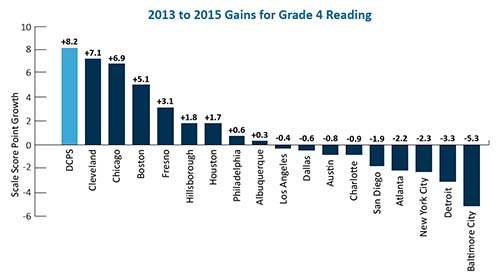Are Dc Public Schools Improving?

The quality of education in the District of Columbia's public schools has long been a topic of intense discussion and debate. As the nation's capital, Washington, D.C., serves as a focal point for educational policy and reform. The question of whether DC public schools are improving is not only relevant to local residents but also to educators and policymakers nationwide. This article delves into the progress and challenges faced by DC public schools, examining key reforms, statistical trends, and expert opinions.
Quick Info Table
| Aspect | Details |
|---|---|
| Total Number of Schools | Approximately 115 public schools |
| Student Enrollment | Over 51,000 students |
| Recent Reforms | Implementation of the Common Core, Increased funding |
| Graduation Rate (2022) | Approximately 70% |
| Notable Challenges | Achievement gaps, teacher retention |
A Brief History of DC Public Schools
The Historical Context
DC public schools have a rich history that reflects broader social and political changes. Established in the early 19th century, these schools have undergone numerous transformations, from desegregation efforts in the mid-20th century to modern-day reform initiatives. Historically, the schools have faced challenges such as underfunding, overcrowding, and achievement disparities.
Major Milestones
Significant milestones in the history of DC public schools include the landmark Brown v. Board of Education decision, which mandated the desegregation of schools across America. More recently, the implementation of mayoral control in 2007 marked a turning point in educational governance, leading to a series of reforms aimed at accountability and performance improvement.
Key Reforms and Initiatives
Implementation of the Common Core Standards
One of the most notable reforms in recent years has been the adoption of the Common Core State Standards. These standards were designed to provide a consistent, clear understanding of what students are expected to learn, thereby ensuring that all students graduate with the skills necessary to succeed in college and careers.
Increased Funding and Resource Allocation
To support these standards, there has been an increase in funding directed toward DC public schools. This funding has been used to reduce class sizes, modernize school facilities, and enhance educational technology. However, debates continue over the adequacy and distribution of these resources.
Focus on Teacher Quality
Recognizing the critical role teachers play in student success, DC has implemented initiatives to attract and retain high-quality educators. Programs such as TeachDC and partnerships with local universities aim to provide professional development and incentives for teachers to remain in the system.

Statistical Trends and Outcomes
Graduation Rates and Test Scores
Graduation rates in DC public schools have seen a gradual increase, reaching approximately 70% in recent years. While this marks progress, it still falls below the national average. Additionally, standardized test scores have shown improvement, particularly in mathematics and reading, although disparities remain.
Addressing Achievement Gaps
Despite overall improvements, achievement gaps persist, particularly among students of different racial and socioeconomic backgrounds. Efforts to address these gaps include targeted interventions, expanded access to advanced placement courses, and increased support for English language learners.
Expert Opinions and Perspectives
Views from Educational Leaders
Educational leaders, including Chancellor Lewis Ferebee, emphasize the importance of continued reform and investment in DC public schools. They highlight the positive impact of recent initiatives while acknowledging the need for sustained efforts to close achievement gaps and improve outcomes for all students.
Alternative Perspectives
Critics argue that while reforms have led to improvements in certain areas, they have not sufficiently addressed systemic issues such as inequality and resource allocation. Some advocate for more radical changes, including charter school expansion and voucher programs, as potential solutions.
Challenges and Opportunities
Teacher Retention and Recruitment
One of the ongoing challenges for DC public schools is retaining and recruiting qualified teachers. Factors contributing to teacher turnover include high cost of living, job stress, and competition from nearby suburban districts. Addressing these issues is crucial for maintaining the quality of education.
The Role of Community and Parental Involvement
Community and parental involvement play a vital role in the success of public schools. Initiatives to increase engagement, such as parent-teacher associations and community partnerships, have shown promising results in fostering a supportive educational environment.
Conclusion
In summary, the question of whether DC public schools are improving is complex and multifaceted. While significant progress has been made in areas such as graduation rates, test scores, and educational standards, challenges remain. Continued efforts to address achievement gaps, improve teacher retention, and engage the community are essential for sustained improvement.
Ultimately, the story of DC public schools is one of ongoing transformation and resilience. As policymakers and educators continue to navigate the challenges of urban education, the lessons learned in Washington, D.C., offer valuable insights for school systems across the nation. By fostering a commitment to equity and excellence, DC public schools can serve as a model of educational innovation and success.




Comments ()